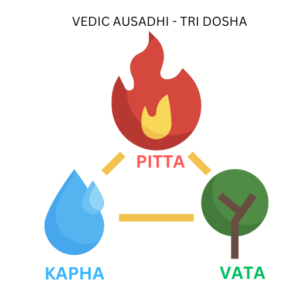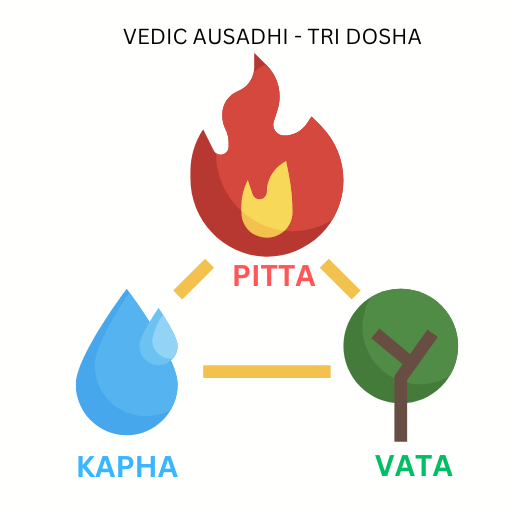“Discover Balance with Ayurveda Dosha – Unlock Your True Potential!”
Introduction
Ayurveda is an ancient system of holistic health and wellness that originated in India over 5,000 years ago. It is based on the belief that health and wellness depend on a delicate balance between the mind, body, and spirit. Ayurveda is based on the three doshas, or energies, that make up each individual. These doshas are Vata, Pitta, and Kapha. Each dosha is made up of a combination of the five elements: air, water, fire, earth, and ether. By understanding your unique dosha, you can learn how to maintain balance in your life and achieve optimal health and wellbeing.
How to Balance Your Dosha Through Ayurvedic Diet and Lifestyle
Ayurveda is an ancient system of health and wellness that has been practiced for thousands of years. It is based on the belief that each person has a unique constitution, or dosha, which is made up of the five elements: earth, water, fire, air, and ether. The balance of these elements in the body determines one’s health and wellbeing. In order to maintain balance, Ayurveda recommends a diet and lifestyle that is tailored to each individual’s dosha.
The first step in balancing your dosha is to determine your dosha type. There are three main doshas: Vata, Pitta, and Kapha. Each dosha is associated with certain physical and mental characteristics, and understanding your dosha type can help you determine the best diet and lifestyle for you.
Once you have determined your dosha type, you can begin to make dietary and lifestyle changes to balance your dosha. Ayurveda recommends eating a diet that is tailored to your dosha type. For example, Vata types should eat warm, cooked foods that are high in protein and healthy fats, while Pitta types should eat cooling, light foods that are high in fiber and low in fat. Kapha types should eat warm, light foods that are high in protein and low in fat.
In addition to eating a diet that is tailored to your dosha type, Ayurveda also recommends certain lifestyle practices to help balance your dosha. For example, Vata types should practice yoga and meditation to help reduce stress and anxiety, while Pitta types should practice relaxation techniques such as deep breathing and mindfulness. Kapha types should practice physical activity such as walking or running to help reduce excess weight and improve circulation.
By following an Ayurvedic diet and lifestyle, you can help balance your dosha and improve your overall health and wellbeing. With the right diet and lifestyle, you can achieve a balanced state of mind, body, and spirit.
The Benefits of Ayurvedic Herbs for Balancing Your Dosha
Ayurveda is an ancient system of medicine that originated in India and is still widely practiced today. It is based on the belief that health and wellness depend on a delicate balance between the mind, body, and spirit. Ayurveda uses a variety of herbs to help restore balance to the body and mind. These herbs can be used to balance the three doshas, or energies, that make up the individual.
The three doshas are Vata, Pitta, and Kapha. Vata is the energy of movement and is associated with the elements of air and ether. Pitta is the energy of transformation and is associated with the elements of fire and water. Kapha is the energy of structure and is associated with the elements of earth and water. Each individual has a unique combination of these three doshas, and when they become imbalanced, it can lead to physical and mental health issues.
Ayurvedic herbs can be used to restore balance to the doshas. These herbs are known for their ability to nourish and strengthen the body, as well as to reduce stress and anxiety. Some of the most commonly used Ayurvedic herbs for balancing the doshas include ashwagandha, shatavari, brahmi, and guduchi.
Ashwagandha is an adaptogenic herb that helps to reduce stress and anxiety. It is known to balance the Vata dosha and can help to improve mental clarity and focus.
Shatavari is an herb that is known to nourish and strengthen the body. It is known to balance the Pitta dosha and can help to reduce inflammation and improve digestion.
Brahmi is an herb that is known to improve mental clarity and focus. It is known to balance the Kapha dosha and can help to reduce stress and anxiety.
Guduchi is an herb that is known to boost the immune system. It is known to balance all three doshas and can help to reduce inflammation and improve digestion.
Ayurvedic herbs can be used to restore balance to the doshas and improve overall health and wellbeing. These herbs are known for their ability to nourish and strengthen the body, as well as to reduce stress and anxiety. By incorporating these herbs into your daily routine, you can help to restore balance to your doshas and improve your overall health and wellbeing.
Understanding the Three Doshas and How They Affect Your Health
Ayurveda is an ancient system of medicine that originated in India over 5,000 years ago. It is based on the belief that health and wellness depend on a delicate balance between the mind, body, and spirit. According to Ayurveda, the three doshas—Vata, Pitta, and Kapha—are the three energies that make up every individual. Each dosha is made up of a combination of the five elements—space, air, fire, water, and earth—and governs different physical and mental characteristics.
Vata is the energy of movement and is associated with the elements of air and space. People with a predominance of Vata energy tend to be creative, energetic, and quick-thinking. They are also prone to anxiety and insomnia. To maintain balance, Vata types should focus on grounding activities such as yoga, meditation, and massage.
Pitta is the energy of transformation and is associated with the elements of fire and water. People with a predominance of Pitta energy tend to be ambitious, organized, and analytical. They are also prone to anger and irritability. To maintain balance, Pitta types should focus on cooling activities such as swimming, walking, and spending time in nature.
Kapha is the energy of stability and is associated with the elements of water and earth. People with a predominance of Kapha energy tend to be calm, compassionate, and patient. They are also prone to depression and lethargy. To maintain balance, Kapha types should focus on stimulating activities such as running, dancing, and vigorous exercise.
Understanding your dosha type can help you make lifestyle choices that will promote health and balance. Eating a diet that is tailored to your dosha type, engaging in regular physical activity, and taking time for self-care can all help to keep your doshas in balance. By understanding the three doshas and how they affect your health, you can take steps to ensure that you are living a balanced and healthy life.
The Role of Yoga and Meditation in Balancing Your Dosha
Yoga and meditation are two powerful tools that can be used to help balance the doshas, or energies, in the body. The doshas are the three fundamental energies that govern the body and mind: Vata, Pitta, and Kapha. Each dosha has its own unique qualities and characteristics, and when they are out of balance, it can lead to physical and mental health issues.
Yoga is an ancient practice that combines physical postures, breathing exercises, and meditation. It is believed to help balance the doshas by creating harmony between the body and mind. Through yoga, one can learn to become aware of their body and its needs, and to move in a way that is beneficial for their overall health.
Yoga postures can be used to target specific doshas. For example, Vata dosha is associated with movement and air, so postures that involve stretching and twisting can help to balance this energy. Pitta dosha is associated with fire and transformation, so postures that involve strength and heat can help to balance this energy. Kapha dosha is associated with water and stability, so postures that involve grounding and stability can help to balance this energy.
Meditation is another powerful tool for balancing the doshas. It helps to bring awareness to the body and mind, and to create a sense of calm and balance. Meditation can be used to focus on specific doshas. For example, focusing on the breath can help to balance Vata dosha, while focusing on the heart can help to balance Pitta dosha, and focusing on the third eye can help to balance Kapha dosha.
Yoga and meditation can be used together to create a powerful practice for balancing the doshas. By combining physical postures, breathing exercises, and meditation, one can create a holistic practice that helps to bring balance to the body and mind. Through this practice, one can learn to become aware of their body and its needs, and to move in a way that is beneficial for their overall health.
How to Use Ayurvedic Oils to Balance Your Dosha
Ayurvedic oils are an important part of the ancient Indian healing system of Ayurveda. These oils are used to balance the three doshas, or energies, that make up the individual. Each dosha is associated with certain physical and mental characteristics, and when one or more of the doshas become imbalanced, it can lead to physical and mental health issues. By using Ayurvedic oils, it is possible to restore balance to the doshas and improve overall health and wellbeing.
The first step in using Ayurvedic oils to balance your dosha is to determine which dosha is out of balance. Each dosha is associated with certain physical and mental characteristics, and by observing your own behavior and physical traits, you can determine which dosha is out of balance. For example, if you are feeling anxious and overwhelmed, it is likely that your Vata dosha is out of balance.
Once you have determined which dosha is out of balance, you can choose the appropriate Ayurvedic oil to restore balance. Different oils are used to balance each dosha, and it is important to choose the right oil for your individual needs. For example, sesame oil is used to balance Vata, coconut oil is used to balance Pitta, and mustard oil is used to balance Kapha.
Once you have chosen the appropriate oil, you can begin to use it to restore balance to your dosha. Ayurvedic oils can be used in a variety of ways, including massage, aromatherapy, and topical application. Massage is a great way to use Ayurvedic oils, as it helps to relax the body and mind while also providing nourishment to the skin. Aromatherapy is another effective way to use Ayurvedic oils, as the scent of the oil can help to relax the mind and body. Finally, topical application of the oil can be used to nourish the skin and restore balance to the dosha.
By using Ayurvedic oils to balance your dosha, you can restore balance to your body and mind and improve your overall health and wellbeing. It is important to choose the right oil for your individual needs, and to use it in the appropriate way to ensure the best results. With regular use, you can enjoy the benefits of Ayurvedic oils and experience improved health and wellbeing.


